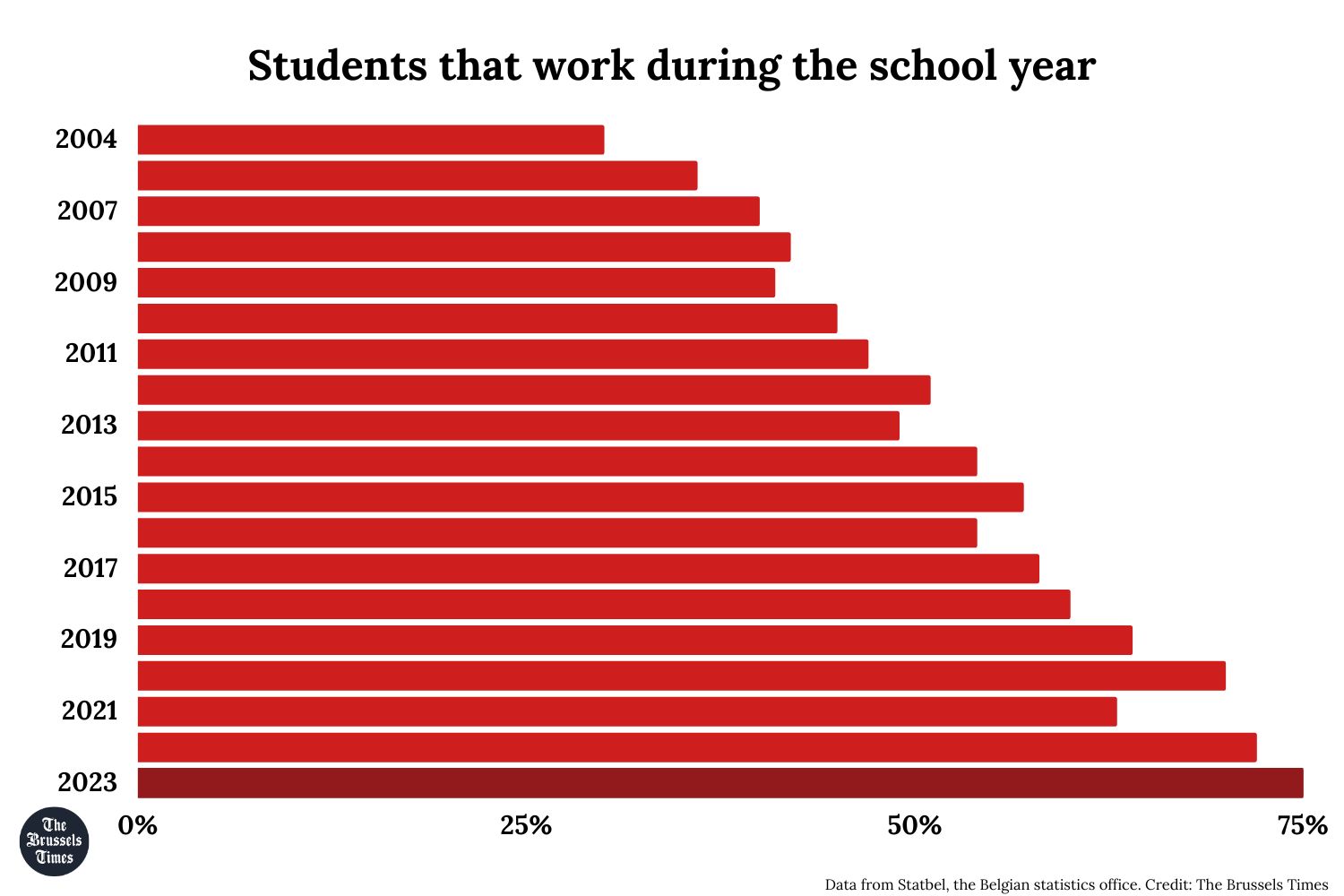For the first time, the number of students working during the academic year is almost at the same level as those working during holidays. The improvement comes mainly as a result of new regulations.
In 2003, less than one-third of students in Belgium had a small part-time job during term time. Now, three-quarters of students in Belgium are working during the academic year – the highest number ever according to Randstad Research’s annual student survey of 1,000 students.
Meanwhile, 77% of all students work as so-called "job students" during the summer holidays. Never before has the difference between the two groups been so small.
The growth in student employment is the result of the more lenient regulations that were introduced in 2017 when the limit for students was counted in hours instead of days. The pandemic saw employers seek help from students on account of the health measures or loss of permanent staff. To allow for this, the maximum number of hours that students can work at a reduced rate of social contributions was raised.
All work and no play?
In January this year, the legislation once again changed, allowing students to work up to 600 hours a year (up from 475 hours) paying reduced social contributions. The impact will only be seen in next year's figures but almost three in 10 students already said they want to work more.
“With the relaxation of legislation, students now have no issue working flexibly. Both employers and students are making strong use of this allowance within the tight labour market," said Randstad spokesperson Wim Van der Linden. He explains that by raising the number of hours a student can work, they seem even more motivated to complement their studies with remunerated work.
40% of students would like to take advantage of the new regulations but say it is not compatible with studies. Meanwhile, another 40% has asked for more working hours either to combat society's increasing longevity.
While the same share of students is forced to work more to continue paying study costs or to contribute more to the family budget, the spending pattern of students remains the same, Van der Linden noted.
"In Belgium, students work mainly to do nice things – buy and save. But in quite a few countries, a large part of income through student work goes to finance one’s own studies,” he said.
Related News
- Over 400,000 workers will not benefit from tax reform, says economist
- Close to home: Most Belgians work where they live
Students at the start of this year reported working an average of 66 days a year, six days more compared to 2022. The median number of days worked, meanwhile, reached 50 days, or ten days more than last year.
Most students are employed in retail (24%), followed by hospitality (19%) and leisure (10%). Being a cashier or an administrative clerk or working in a warehouse are the most popular jobs among students.


